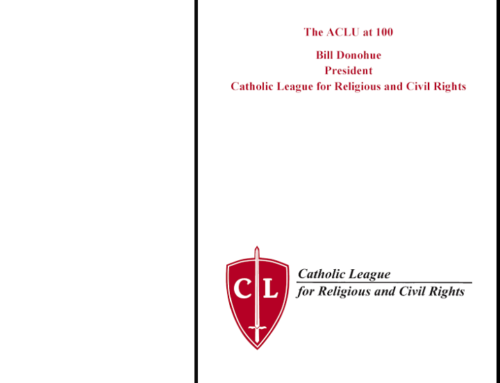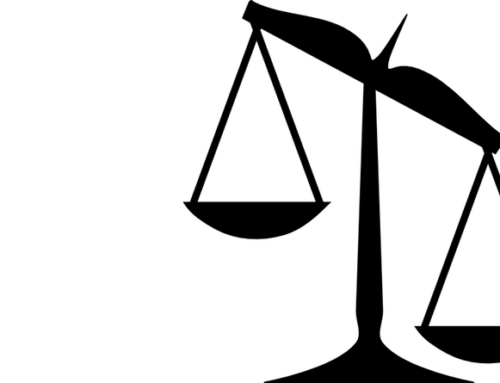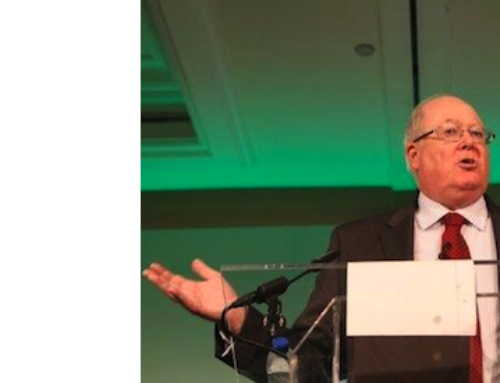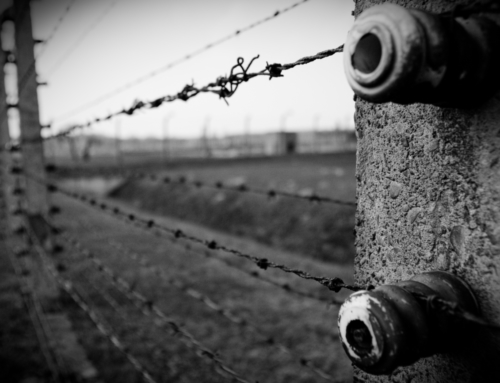Bill Donohue, Ph.D.
President
Catholic League for Religious and Civil Rights
July 20, 2017
Meet the Accusers
Cardinal George Pell’s appearance before a Melbourne court on July 26 will be watched carefully all over the world. He will answer questions about alleged sexual abuse, including covering up for molesting priests and his own personal involvement in molestation.
The details of the charges against him have not been made public; we only know that the alleged offenses took place a long time ago. He has steadfastly proclaimed his innocence saying he is a victim of “relentless character assassination.” The evidence strongly supports his position.
Everyone claims to be against sexual abuse, including the abusers, so it means little to protest against it. But when Cardinal Pell says that “The whole idea of sexual abuse is abhorrent to me,” it is much more than a throw-away line: he has a stellar record of combating this problem.
When Pell was made Archbishop of Melbourne in 1996, he was the first Australian member of the Catholic hierarchy to institute reforms. The Melbourne Response was a serious effort to stem the sexual abuse of minors. It took him less than three months to move on this issue. Since that time, he has been an outspoken critic of priestly sexual abuse.
Cardinal Pell is no stranger to vile accusations made against him. But in every case, he has been exonerated.
- A Melbourne man said he was abused by Pell in 1962 at a camp when he was 12; Pell was studying for the priesthood. The case was thrown out when nothing could be substantiated. Not a single person who worked at the camp supported the charges, and all of the signed statements were favorable to Pell. The accuser had been convicted 39 times for offenses ranging from assault to drug use. Indeed, he was a violent drug addict who served four years in prison. He drove drunk, beat people, and took amphetamines.
- In 1969, Pell was accused of doing nothing to help an abused Australian boy who pleaded for help. But Pell’s passport showed that he lived in Rome the entire year.
- At a later date, Pell was accused of chasing away a complainant who informed him of a molesting priest. The authorities dismissed the charges after discovering that Pell did not live at the presbytery in Ballarat where the encounter allegedly took place. The accuser was later imprisoned for sexually abusing children.
- In a high profile case, Pell was accused of bribing David Ridsdale to stop making accusations to the police that he was abused by his uncle, Gerald Ridsdale, a notorious molester priest. The accusation was investigated and Pell was exonerated.
- Pell was also accused of joking about Gerald Ridsdale’s sexual assaults at a funeral Mass in Ballarat. But there was no Mass that day and the priest whom Pell was allegedly joking with was living someplace else when the supposed incident took place.
What about Pell’s accusers this time? From what we know of at least some of them, they are not exactly beacons of integrity.
In October 2016, Pell spoke to Victoria police about allegations that he had inappropriately touched two boys while horsing around in a pool in the 1970s. Neither of the two boys said a word about this alleged incident for nearly 40 years. Why not? What made them come forward recently? Just as important, why have the Australian media, and the media in other parts of the world, been reluctant to report this fact?
Moreover, why have the media had so little to say about the character of these alleged victims? Here’s what we know.
Lyndon Monument was a big boozer, a drug addict, a drug dealer, and a thug who beat and stalked his girlfriend. An ex-con, he has also been arrested for burglary, assault, and making threats to kill. Damian Dignan also has a record of violence, and has been arrested for drunk driving.
Not surprisingly, Monument and Dignan have also made accusations against former teachers. These are the guys who said Pell inappropriately touched them while throwing them off his shoulders in a swimming pool in the 1970s.
Then there are the two choir boys: They claim that Pell made them perform oral sex on him after Mass at St. Patrick’s Cathedral almost two decades ago. Over the past few years, the police investigated this charge, and found nothing to support it. One of the boys has since died—he overdosed on drugs—though not before admitting to his mother, on two occasions, that he was never abused by Pell.
A priest who was Pell’s right-hand man, always accompanying him during this period at St. Patrick’s, told the police that it was “physically impossible for Archbishop Pell to have been alone with anyone in the Cathedral, before, during, or after the celebration of Sunday Mass or on any other occasion.”
Can Pell Get a Fair Trial?
How long will it take for justice to be served? It depends on a lot of factors, but it could drag on for years. Some court observers say it could be over in a few months; others think it will last well into 2019.
Pell has testified before and/or spoken to the Royal Commission into Institutional Responses to Child Sexual Abuse on several occasions, offering his full cooperation. However, the Royal Commission has been less forthright.
Pell arrived in Australia on July 11 to prepare for his day in court. Within hours after doing so the Royal Commission released a trove of emails and letters accusing him of wrongdoing. A spokesman for the panel said the timing was coincidental. Was it also a coincidence that the Royal Commission published its final submissions against Pell last February, at the same time that Pell was being interrogated by the panel?
We know one thing for sure: Pell was demonized when he offered his account. Indeed, as a reporter for one Australian newspaper put it, he has “appeared at a parliamentary inquiry and a royal commission and before an audience of abuse survivors who reflexively hiss, howl and heckle.” Yet he always honors requests to speak.
Pell has received the support of his fellow Australian bishops, but no one has been more outspoken than Hobart Archbishop Julian Porteous. He is worried whether Pell can receive a fair trial, especially given the media circus that has developed. “I don’t know how a jury could proceed with a trial where [there is] so much media out there,” he recently said. He blames the media for “creating a very unfair environment for justice.”
Archbishop Porteous has good reason to be concerned. In 2002, Pell was completely exonerated of allegations that he abused a teenager in the 1960s. Yet the same news outlets that accurately reported the story in 2002 said his name was not fully cleared in 2013!
Few Australian reporters have been as dogged as Andrew Bolt in covering the Pell story; he writes for the Herald Sun. He has long noted the media bias against Pell. In 2016, he wrote, “There is something utterly repulsive about the media’s persecution of George Pell. There is something also very frightening about this abuse of power.”
On July 3, 2017, Bolt said, “The media commentary suggests there’s little chance Cardinal George Pell can get a fair trial.” What concerns him is the temptation to make someone in the Church hierarchy pay for the sins of others. “He himself may be innocent,” Bolt says, “yet could be punished as a scapegoat.”
Amanda Vanstone is not a friend of organized religion, but in her coverage in the Sydney Morning Herald she noted that “What we are seeing is no better than a lynch mob from the dark ages.” She adds that “The public arena is being used to trash a reputation and probably prevent a fair trial.” She freely admits that she and Pell have “widely divergent views on a number of matters,” but having “differing views isn’t meant to be a social death warrant for the one with the least popular views.”
Complicating matters further for Pell is the site of his court hearing, the Australian state of Victoria, also known as the People’s Republic of Victoria. Not only is it a hotbed of anti-Catholicism, its due process rules leave much to be desired. There is no voir dire, or questioning of prospective jurors. Which means there will be no screening of jurors who might hold an animus against the Catholic Church.
Why Pell is Hated
The principal reason why Pell is hated is because he is a larger-than-life Australian cleric who strongly supports the Church’s teachings on sexuality. Quite frankly, he is an inviting target in a land where expressions of anti-Catholic bigotry are ascendant. Carl E. Olson writes in the Catholic World Report that “much of Australia seems to have held on rather tightly to its suspicion, dislike, and even hatred of the Catholic Church.”
Olson quotes one of his Aussie correspondents. “The Australian leftist establishment hates him, the gay lobby hates him, the atheists, liberal Catholics and feminist ideologues hold him in contempt and he has taken on the Italian mafia in trying to reform the Vatican finances.” In addition, secular militants in and outside of government are currently pushing for euthanasia and transgender rights, and are “quietly gloating over the possibility of destroying Australia’s best-known Catholic.”
It is not just anti-Catholics who are ripping Pell and/or the Catholic Church—some left-wing Catholics, including priests, are taking aim. Consider the testimony offered last February before the Royal Commission.
Father Michael Whelan, SM, is a parish priest and director of Aquinas Academy. He testified that the Church’s teaching on celibacy was “unjust” and that it is time to “get rid of seminaries.” To get a good look at his mindset, consider this remark: “Why has the church and governance of the church repeatedly persecuted and oppressed Jews, tortured heretics, and why did it fight the brutal wars we know as the crusades?” His command of history, to say nothing of his anger, is appalling.
Father Francis Maloney STB also went over big with the panel; he is a senior professional fellow at Catholic Theological College. He testified that in the 1960s “Things were looking good” for the Church. But when clerics like Pell came along, it was “back to the old system.” He has it all backwards.
Monica Doumit, who has done yeoman work on the Pell story for the Catholic Weekly, pointed out that the data show it was in the 1960s and 1970s when the sexual abuse scandal took hold—the same years it exploded in the United States—and it was not until Pell made reforms that the problem was checked.
Father Gerry O’Hanlon SJ was imported from Ireland to testify. An adjunct professor at Loyola College, Dublin, he blamed a “top-down model of leadership” made popular during the tenure of Saint John Paul II. This, he said, accounted for “the poor response on child sexual abuse because people were afraid to raise unpopular ideas on any issue, but mainly in relation to sexual morality.” He did not say why a response of any kind was needed in the first place, nor did he comment on the sexual orientation of the molesters. More about that later.
Father Thomas Doyle is every dissident’s favorite carping priest. He surprised the panel when he took issue with Jesus: He said Our Lord was not the founder of the Catholic Church. He did not say who founded the Catholic Church, but in 2011 he told an audience of Catholic haters in America that it was Constantine. He also said at the conference of professional victims’ advocates that “The Mass = magic words.”
The Royal Commission also heard from an array of other Church critics.
Dr. Michelle Mulvihill is a psychologist and former Sister of Mercy. The sexual abuse scandal, she said, could be explained as a power grab and the result of a misogynistic culture. Curiously, she never identified the existence of a non-misogynistic culture. More important, her hostility to Catholicism is unmistakable, and not at all unusual for ex-nuns (or ex-priests). “Compulsory registration of active priests and religious is absolutely necessary.” Her contempt for civil liberties is astonishing.
Neil James Ormerod is a professor of theology at the Australian Catholic University. He claimed that the Archdiocese of Adelaide, under the tutelage of a progressive bishop, had the best record of combating the sexual abuse of minors. But as Doumit pointed out, he was wrong: its record was worse than the national average. She accused him of misusing the abuse data to further his own “particular hobby horse,” in this case advancing “women in leadership roles” rather than objectively pursuing the truth.
Patrick Parkinson is a professor of law at Sydney University. He told the panel that the hierarchical structure of the Church was responsible for the problem of sexual abuse. He did not identify a single non-hierarchical institution, secular or religious, that has ever existed in the history of the world. Nor did he explain why this problem is particularly prevalent among step-fathers and live-in boyfriends, neither of whom have anything to do with hierarchical structures.
Peter Johnstone is president of Catholics for Renewal, an organization he insists is not dissident. Yet he not only accuses the Church of mistreating women, he finds fault with the Church’s alleged “extended claims of infallibility.” Those claims, he says, are “stifling discussion on many important issues,” especially human sexuality. But he is not a dissident.
Louise Milligan did not testify before the Royal Commission but she has made quite a splash with her recent book, The Rise and Fall of George Pell. To say that her book has been ripped by reviewers would be a gross understatement. Her palpable bias and inability to get the facts straight have been widely noted, especially by Julia Yost in a devastating article posted on the website of First Things. No wonder American theologian George Weigel branded the Milligan volume “a hatchet job riddled with inaccuracies and replete with unfounded allegations.”
Data Prove Revealing
Whenever data are presented on any issue, especially on matters that involve criminality, it is important that comparisons with other individuals or institutions be made. The Royal Commission promised to do this, but its top-heavy interest in the Catholic Church raises serious concerns.
We’ve seen this game played out in the United States before, most notoriously in Philadelphia. In 2001, Lynne Abraham, the Philadelphia D.A., pledged to probe all religious organizations and denominations on the sexual abuse of minors. She did not: She focused exclusively on the Archdiocese of Philadelphia.
Fast forward to Australia today. The Royal Commission spent 15 days last winter on the Catholic Church. By comparison, it spent three hours on the Jehovah’s Witnesses, and just a few hours on the Uniting Church. Yet proportionately speaking, the number of sexual abuse cases in those two religions—as compared to the Catholic Church—would seem to merit much more attention.
The Catholic population in Australia totals 22.6 percent. Between 1980 and 2015, 4,444 allegations were made against members of the Catholic Church. The media would have us believe that the accused were all priests. Wrong. That number includes religious brothers, sisters, and lay people.
The Jehovah’s Witnesses comprise .4 percent of the population, and never once has it reported a single case of child sexual abuse to the authorities. Its leadership claims a religious exemption from doing so, invoking an old biblical rule requiring two witnesses to prove wrongdoing. But even with this restriction, the panel learned of 1,006 cases of alleged sexual abuse.
The Uniting Church makes up 3.7 percent of the Australian population. The panel found that there were 2,500 allegations made against its clergy during its 40 year history. Anglicans, who total 13.3 percent, were charged with 1,100 allegations between 1980 and 2015.
What about Islam? No data are available. It is the third largest religion in Australia, yet in the four years that the Royal Commission spent investigating religious organizations, it never bothered to question any Muslims. Islam was simply given a pass.
This is inexcusable. It is deliberate. It is a dereliction of duty. The corruption extends to the top of the Australian government. Why are the media ignoring this? Because the only data that matter pertain to the Catholic Church?
Nonetheless, the data on the Church are worthy of much discussion. Let’s take a closer look at what was found.
The 4,444 allegations include both substantiated and unsubstantiated charges. In other words, the figure of 7 percent of Australian priests who have been accused between 1980 and 2015 has not been verified. More important, it cannot be. Why? For one, the allegations extend back to the 1920s. Who is going to validate charges going back nearly a century ago?
The Royal Commission says that 1,880 alleged perpetrators were named. But this figure, by its own admission, includes 500 persons, or 27 percent of the total, for whom there is no record. That’s a huge chunk.
So how many of the 4,444 alleged victims testified? Two hundred sixty-one. Why did it take so long for these alleged victims to come forward? Few reporters have any interest in finding out, but Bolt did. “The average gap between alleged offence and the alleged victim lodging the complaint was 33 years, according to the royal commission.”
Virtually every serious psychologist and psychiatrist who has studied the subject of “repressed memory” considers it a throw-away term. Yet the media and victims’ advocates let it roll off their lips with alacrity, inviting the public to think that it is a real-life phenomenon.
Clinical psychologists from the University of Nevada, Reno have studied this issue carefully. Led by William O’Donohue, they found that false memories—inaccurate perceptions of an event—are not identical to repressed memories, or memory of a major event that has been erased. False memories are real; repressed memories are not. They concluded that “there is a large amount of scientific research that clearly shows that repressed memories simply do not exist.”
No matter, the figure of 4,444 accusations over a period of 35 years appears daunting. However, this figure lumps substantiated cases of abuse with the unsubstantiated. Moreover, the accusations extend back 100 years. It is not certain what to make about all of this, but a look at the American situation might prove instructive.
We know that in the United States, the much touted figure of 4 percent of the clergy who had an accusation made against them between 1950 and 2002, is misleading: only half were substantiated. In other words, is the figure of 7 percent of Catholic clergy and laity who have been accused of sexually abusing minors in Australia accurate? Or is it more likely half that number?
Thanks to Doumit, we know that in Australia as a whole, there were 5,474 substantiated cases of child sexual abuse that occurred between 2014 and 2015. Looks like this problem is on-going in many quarters.
Doumit also points out that “most of the claims [against Catholics] occurred before 1990,” and that with the exception of a few dioceses, “the proportion of clergy who first had a complaint made against them since the year 2000 is less than 1%.”
To put it differently, this is a problem which has been mostly checked, much as it has in the United States. For instance, between 2015 and 2016, there were two new substantiated cases made against 52,238 American priests and deacons, or .004 percent of the clergy. No institution of any kind can match that figure.
Finally, who is doing the molesting? The lion’s share of the abuse has been done by homosexuals. In Australia, 78 percent of the complainants were male; the average age at the time of the alleged abuse was 11.6.
The Department of Health in Australia has determined that early adolescence begins between 10 and 13. Therefore, the average victim was postpubescent, meaning that homosexuals were the victimizers, not pedophiles.
In the United States, between 1950 and 2002, 81 percent of the victims were male and 78 percent were postpubescent. Less than 5 percent of the abusers were pedophiles.
Just as in the United States, there is no interest in Australia, both inside and outside the Catholic Church, of discussing the role that homosexuals have played in molesting minors. In both nations the data make it clear that this is not a problem of pedophilia, yet there is no courage to speak the truth about this matter. Frankly, this is a homosexual cover-up.
Here’s another similarity: both nations have their monster priests. In the United States, it is Paul Shanley. The serial abuser is known to the public as a pedophile, though most of his victims (just like his consensual sexual partners) were postpubescent males. In Australia, their monster priest is Gerald Ridsdale. He, too, is known to the public as a pedophile. But he is not—he is a homosexual.
The media are well aware that Ridsdale is a homosexual, but they lie about it. For example, the Daily Mail ran a piece on July 12, 2017 with the following title: “The Grinning Paedophile and His Teenage Victim: Vile Predatory Priest Gerald Ridsdale Smiles on a Bed Beside Helpless 14-Year-Old Boy He Abused ‘Every Day for Six Months.'”
A 14-year-old boy is postpubescent. Therefore, any male who abused him is a homosexual. Straight men do not abuse teenage males—only homosexuals do. By the way, Ridsdale’s nephew, David, who was abused by his uncle priest, was between the ages 11 and 15 when the molestation took place. Again, homosexuality, not pedophilia, was at work.
Gerald Ridsdale’s homosexual behavior was long known to Church officials. In 1982, Ballarat Bishop Ronald Mulkearns admitted that there was “a problem with homosexuality in the diocese.” He named Ridsdale as one of those who had been “committing homosexual acts” within the community. Had his homosexuality been taken seriously, things would have been different. But just as in the United States, active homosexual priests in Australia have long been protected, to the detriment of everyone.
Conclusion
Can anyone say with a straight face that if Imam Abdul were the subject of a Royal Commission investigation that he would be treated the same way Cardinal Pell has been?
No fair-minded person wants to see guilty priests—or anyone else—get away with any offense, much less the sexual abuse of minors. But justice demands that the accused, including those charged with heinous crimes, be entitled to a presumption of innocence. The evidence shows that Cardinal George Pell has not been afforded this elementary right, and has indeed been a victim of a war against him.







